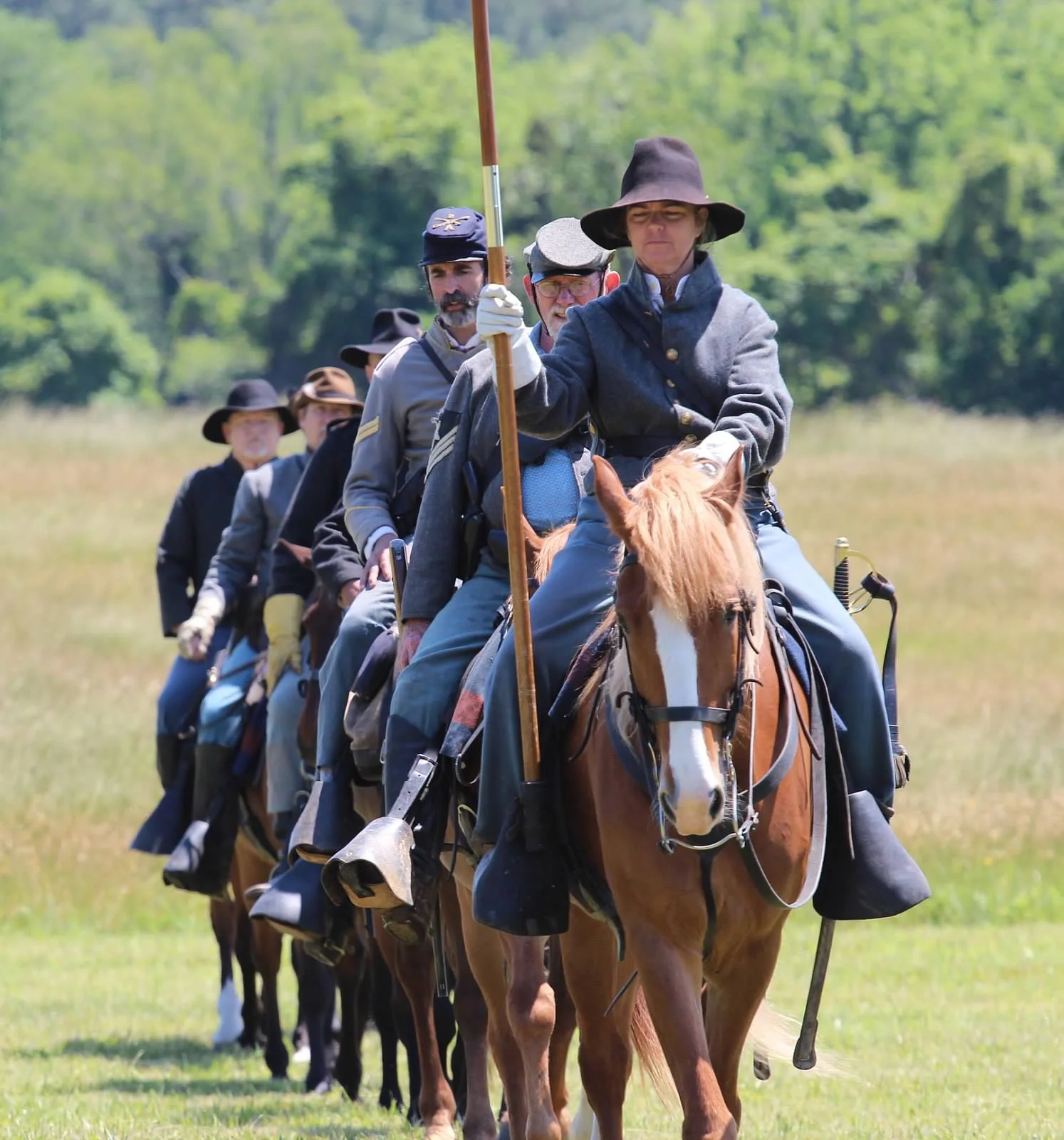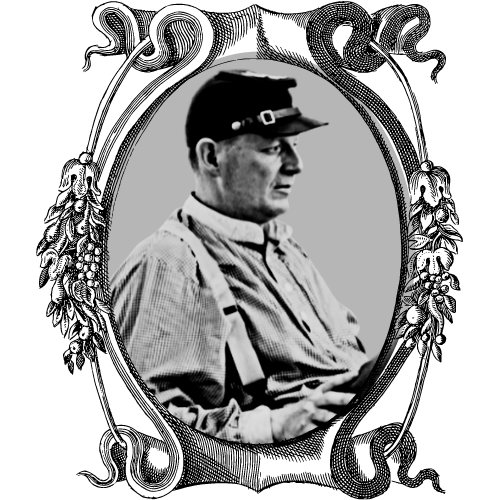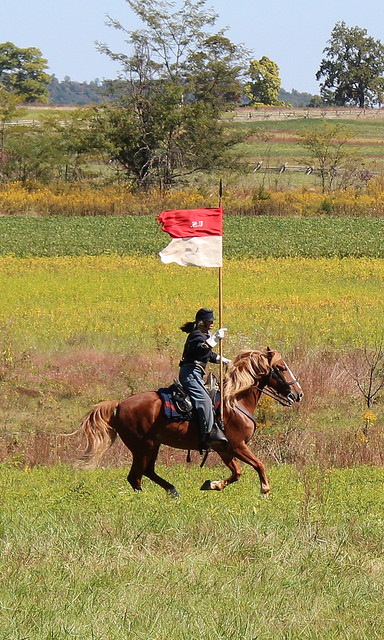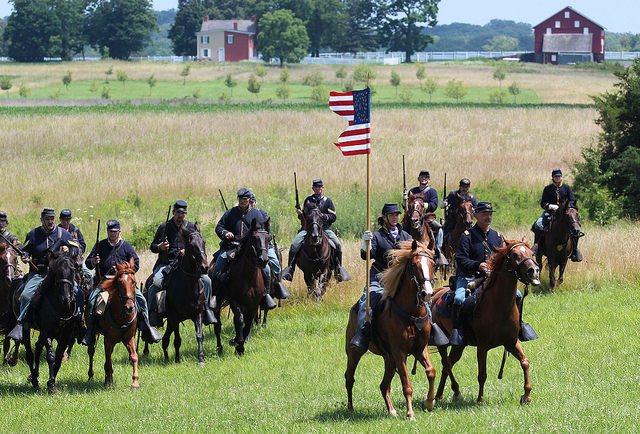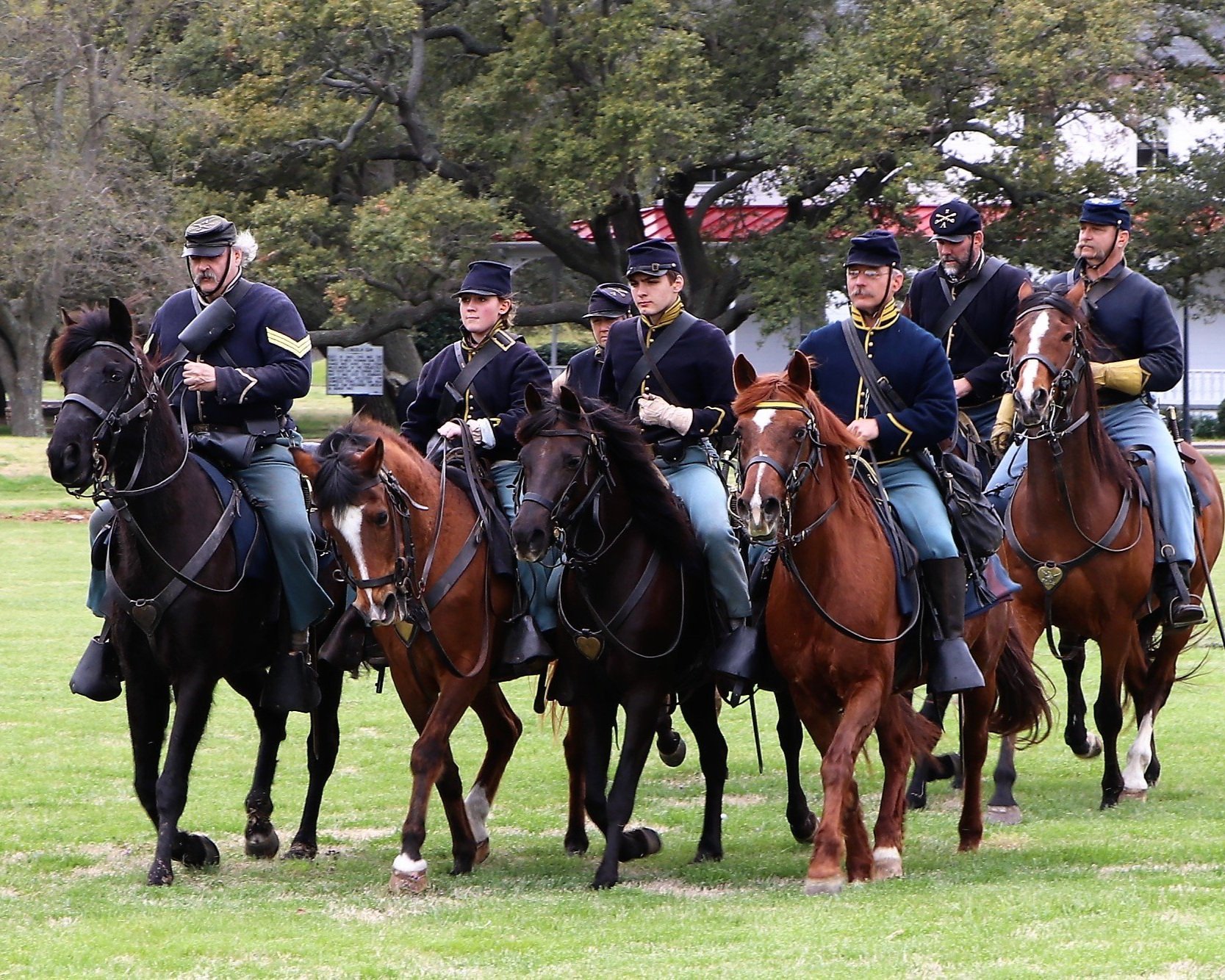Cavalry Drill
By Mike Riggleman
Our thanks to Mike for the the time it took to research this topic and to develop "Poinsett's Cavalry Tactics for Reenactors", a quick reference guide for modern day cavalry reenactors. You can download a copy by scrolling to the bottom of this page.
Tpr. Mike Riggleman
During the American Civil War and in all previous periods of organized warfare, drill was synonymous with tactics. Tactics are the art of deploying and directing troops to secure military objectives or advantages in battle. Drill is how these deployments were taught and executed.
Until the late 19th century, all organized military forces used drill maneuvers as the primary means of warfighting. Different formations each served a different purpose, and being able to smoothly switch between them as needed was vital. The commander's knowledge of which formation was optimal for a given situation could win or lose the fight. For example, columns in a file, by twos, or by fours allowed rapid cavalry travel in narrow areas (like roadways), but these formations were ineffective during combat. Both columns and lines abreast (battle line) were used in the fight since they allowed the formation to bring the maximum amount of weapons to bear against the enemy.
Unit cohesion and cooperation in battle can be far more important than numbers alone. For example, the Macedonians, led by Alexander the Great, conquered most of the known world by using a tightly grouped formation called the phalanx. The phalanx optimized the unit’s offensive weapons and defensive armor into an "armored porcupine" that, at the time, was thought invincible. But no single formation or tactic is always successful. The more flexible Roman tactics, with their formations of centuries, maniples, cohorts, and legions, later defeated the Macedonian phalanx. Even though the Romans were almost always outnumbered, they often fought an enemy much less organized, such as the Celtic warriors who fought with little or no cooperation between individuals. Through strict discipline and superior tactics, the Romans developed the most successful military force in history.
Before modern communication systems, drill was the primary method of maneuvering large bodies of troops on noisy and confusing battlefields. Drill commands, by both voice and bugle, enable commanders to quickly communicate orders to their units in an easily understood manner. The well-practiced execution of these commands could mean the difference between victory and defeat. Success on the battlefield is often determined by the army, which can best arrange its force to deliver the most concentrated fire at the correct target at the proper time. Drill was used to quickly place troops to take advantage of the terrain and to create or take advantage of the enemy’s weaknesses.
Trumpet or bugle signals were also an integral part of the drill and tactics. Their use allowed commands to be heard and executed by large numbers of troopers scattered over a large area during combat. The bugle calls told the men when to get up, care for the horses, eat, and sleep. The 37 calls in the manual included Drill Call, Fatigue Call, Guard Mount, Boots and Saddles (when to get yourself and your horse equipped), Stand to Horse (formation), Forward, Right, Left, About, Wheel, Trot, Canter, Charge, Commence Firing, Cease Firing, Retreat, Rally, Dismount and Fight on Foot (disperse), as well as several march tunes. Each regiment contained two buglers per company and one chief bugler. Bugle calls were such a part of the daily cavalry routine that the horses even learned to respond to them without their riders.
Skill and discipline in unit drill was considered one of the primary, if not the most important, attributes in 19th-century warfare. The soldiers often spent the majority of their training time at drill practice. The individual common soldier took great pride in his unit’s drill abilities, and competitions were common. The soldiers even admired the drill expertise of enemy units. Consider the numerous recorded references to the awe of the Union soldiers when they witnessed the precision and skill of the Confederate attack (Pickett’s Charge) on the third day at Gettysburg.
The American Civil War occurred at the time of the advent of modern weapons (machine guns, rapid-firing artillery, etc.), which made large, tight formations obsolete in warfare. However, the modern military still uses drill to teach teamwork, discipline, and attention to detail. Most modern military units and each of the different U.S. Services still have drill teams and honor guards to showcase the unit’s skill, pride, and traditions.
2nd U.S. Cavalry/9th Virginia Cavalry Performing Drill
Poinsett’s
Originally titled "Cavalry Tactics", the first official manual written specifically for mounted troops (cavalry and dragoons) was approved by the Secretary of War, Joel R. Poinsett, in 1841 and published by the U.S. War Department, the forerunner of today's Department of Defense. In spite of the official title, the soldiers knew the manual as "Poinsett's Tactics." Modern Reenactors most often simply use the term "Poinsett's" when referring to the manual.
Today, Joel Roberts Poinsett is most remembered for his work as an accomplished amateur botanist. While serving as U.S. minister to Mexico in the late 1820s, Poinsett introduced the U.S. to a flower native to Mexico and Central America. The flower was later renamed the Poinsettia in his honor.
In November of 1861 the War Department approved a new cavalry tactics manual, written by then Lt. Col. Philip St. George Cooke (commander of the 2nd Dragoons/Cavalry and father-in-law of J.E.B. Stuart of Confederate cavalry fame). The timing of this new manual could not have been worse. The numbers of experienced cavalry officers were very small and they were in great demand to train the thousands of new volunteers recruited to fight the war. These experienced officers were all well trained in Poinsett's, and they were reluctant to change to the new "Cooke's Tactics" just as they were franticly working to train all those new troopers.
The major difference between the two manuals was that Poinsett used a double-rank formation for combat, while Cooke used a long single rank. To make things even more confusing, several privately written, "simplified" cavalry manuals were available, some endorsed by well-respected military officers of the day. Of course, there were southern versions of these manuals as well.
So, for a time, several different cavalry tactics manuals were being used in different units. At about this same time, some volunteers in the east who had been using Cooke's were forced to switch to Poinsett's. Since many of the Confederate cavalry leaders were members of the pre-war regular army, many southern units also used Poinsett’s during the War.
Poinsett's Cavalry Tactics for Reenactors
The 2nd U.S./9th VA drills using the period Poinsett’s tactics. However, finding a copy of Poinsett’s can be a challenge. Original copies are valuable collector’s items, and are often in very fragile condition. There have been a few reprintings over the years, but even these are now out of print and very hard to find. Even when you are lucky enough to have a copy of the Poinsett’s manual it can still at times be difficult to decipher since it is written in the very stiff and formal wording common to that period. To make it a little easier for a 21st century reenactor to learn the proper drill, our unit's Training Committee, headed by Mike Riggleman, developed and wrote a simplified "modern translation" entitled Poinsett's Cavalry Tactics for Reenactors.
This is a handy 41-page booklet for teaching Civil War cavalry Reenactors the basic tactics (drill movements) and manual of arms as set forth in the original Poinsett's manual. Mike Riggleman, the lead author, wrote this booklet as a simplified guide for exposing both new and experienced reenactors to army drill on horseback. Not every command or maneuver from the original manual is included, but those most likely to be used by mounted cavalry in today's Civil War reenactments and living history events are there. Since Poinsett's was taught at West Point from 1841 right up through the Civil War, this booklet is also appropriate for Confederate cavalry reenactment units.
Each booklet measures 5 ½" x 8 ½" - just the right size to tuck into a saddle bag or cavalry boot for quick reference in the field. Directions are written in simple, modern English and well illustrated with easy to follow diagrams and artwork. It also includes memory aids, safety tips, and pointers from experienced Reenactors. Here's a sample:
If you would like to download a copy of Poinsett's for Reenactors, please first read the author's permissions below then click on the button. You can also access an e-version of the 1841 Poinsett's Cavalry Tactics, originally published by the War Department.
